Art and Artists
Best Henri Matisse Paintings and Prints for Stylish Home
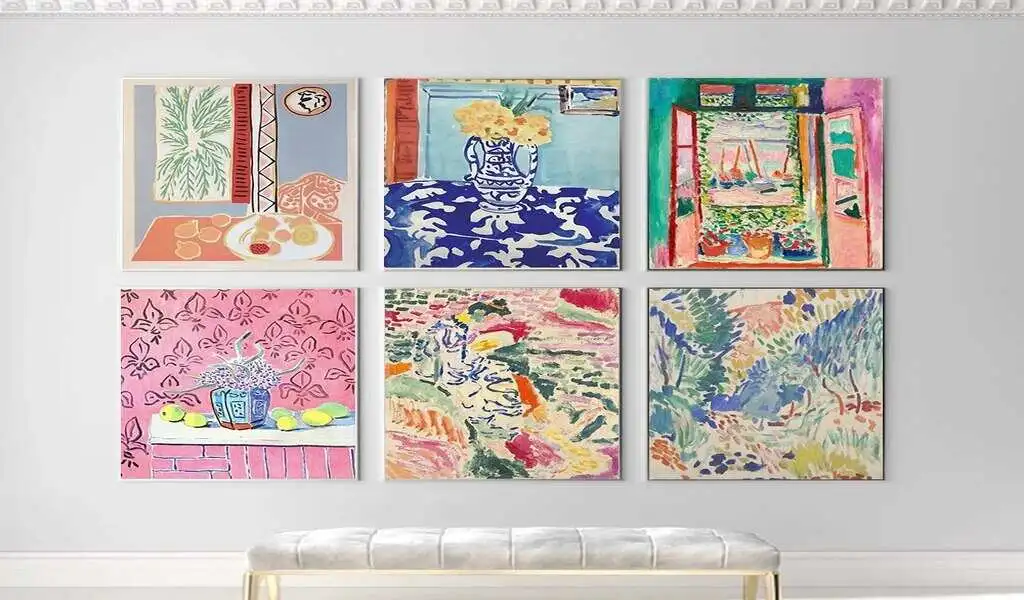
FROM PORTRAITS TO CUTOUTS, FROM THE ODALISCHE TO THE FAMOUS DANCE SERIES, HERE IS A SELECTION OF WORKS TO REMEMBER THE MASTER OF THE FAUVES LIKE HENRI MATISSE.
Few Moderna art names are as inextricably linked with the use of color as Henri Matisse (Le Cateau-Cambreis, 1869 – Nice, 1954). Henri Matisse took painting lessons while working as a legal clerk after studying as a lawyer, eventually becoming a full-time artist: in his early years, he approached the symbolist painter Odilon Redon and the divisionism of Paul Signac, with whom he became friends, separating in a short time towards wider brushstrokes of color.
Over the course of his career, he created some of the century’s greatest masterpieces, often paintings but also sculptures and ceramics, but it took a long time for contemporaries to recognize them (his first exhibition, in 1904, was a flop). Here are ten works that you must see to understand the evolution of Moderna’s style over time and its influence on modern and contemporary art.
If you want some unique acrylic standees, you can choose to make it yourself. Upload pictures with Henri Matisse to pdodo, you can use your design skills and start customizing your acrylic atandees. These acrylic standees show personality. Use them to decor your desk or room! Welcome to pdodo to learn more about custom acrylic standees!
BUY HENRI MATISSE PRINTS ON LAVELART.COM
1. MADAME MATISSE’S PORTRAIT (THE GREEN LINE)
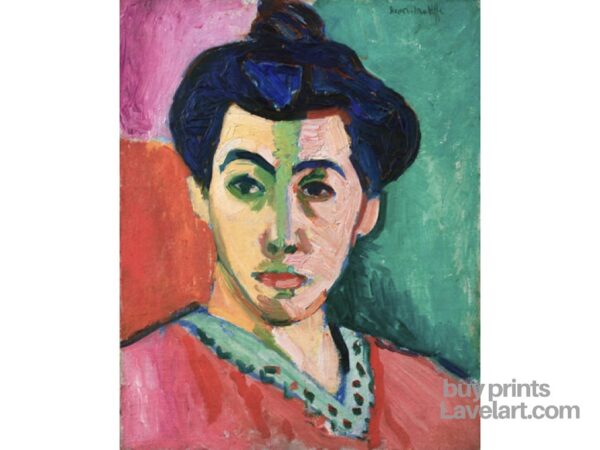
Henri Matisse, Madame Matisse
The Fauves—literally, the Beasts—are a movement that began in 1905 at the Salon d’automne in Paris. One of the Secolo’s first true avant-garde currents There is no claim to realism in Madame Matisse’s portrait from 1905; color is an end in itself, and the artist’s wife – Amellie Noellie Matisse-parare – is depicted.
2. THE JOY OF LIVING
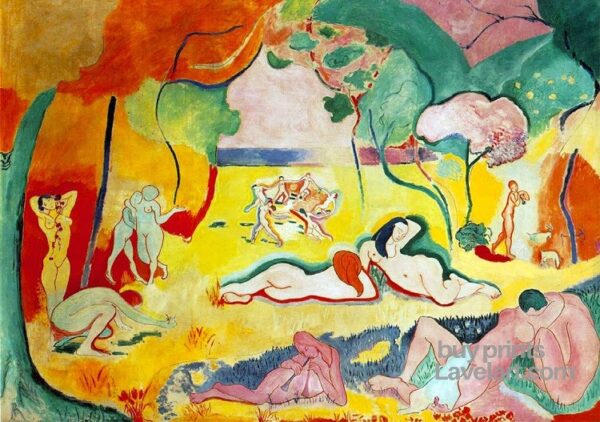
Henri Matisse’s “The Joy of Living”
The joy of living was born in 1906, during a time of great pessimism and turmoil. As a reaction to this atmosphere, the work depicts a Mediterranean environment with the Traits of Earthly Paradise and foreshadows the subject of dance, which would reach its peak expression a few years later.
There are mythological and artistic references – from Titian to Manet, up to Cezanne and Gauguin – but the idea of mimetic representation is abandoned, with figures and landscapes painted without details or natural colors, but with the contours of the forms prominent.
This is a watershed moment in Matisse’s career as an exponent of The Fauves, which reserved one of the harshest criticisms for the painting: when it was exhibited at the Salon des independents in 1906, Paul Signac – a friend of Henri Matisse – described it as “a painting with repulsive and too thick colors with an inch-wide outline.”
3. THE CONVERSATION
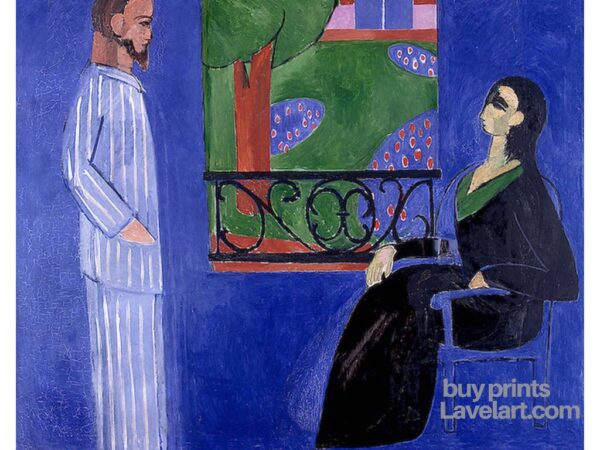
Henri Matisse, the conversation
The 1909 conversation, painted in Matisse’s country house, depicts the artist and his wife conversing in a room overlooking a garden. The rich blue field that surrounds the two subjects is more of a flurry of brush marks than a description of an interior.
Some critics have speculated that the dominant use of Blue suggests an emotional distance, which is emphasized by the distance between bodies and habits, with her in street clothes and him in pajamas, which he also used to work. The view of the courtyard is partially obscured by ornamental iron elements, and it is suspended between them like a painting.
4. THE DANCE SERIES
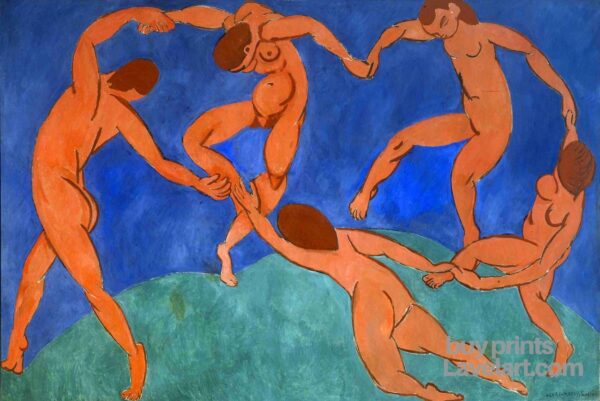
Henri Matisse’s dance
The painting dance of 1910 is perhaps the most famous of the painter who grew up in northeastern France, and it is universally recognized as a pivotal point in his artistic development. This painting, along with the accompanying work Musica, was commissioned by a Russian industrialist named Sergei Shchukin for his lavish mansion in Moscow.
It was preceded by the preparatory work Danza I and followed by the tripartite mural Danza II. Matisse’s brushstrokes become flatter, looser, and more fluid in this painting, and the flamboyant colors of the five red figures, green landscape, and blue sky reflect Matisse’s fascination with primitive art. The palette is classic fauve: the intense and warm colors against the cold blue-green background, as well as the rhythmic succession of dancing nudes, convey feelings of emotional liberation and hedonism, probably inspired by Stravinsky’s Young Spring Girls o
5. THE RED STUDIO
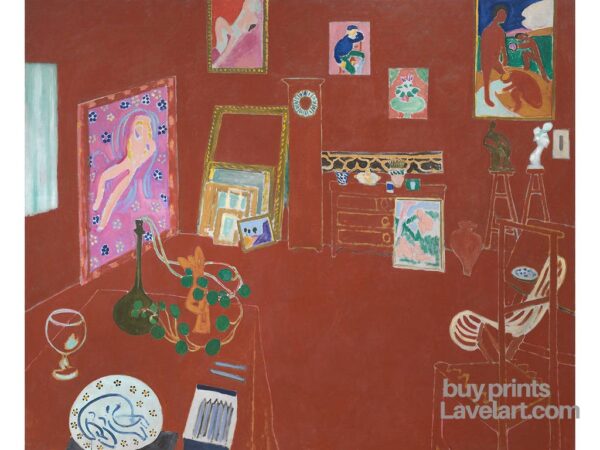
The Red Studio, Henri Matisse, and Courtesy
Painted in Iss les-les-Moulineaux in 1911. The work of the young sailor II, just above a pendulum clock with no hands, is easily identified. Henri Matisse admitted that he had no idea why he chose red for the composition, but the strength of this monochrome scheme will influence abstract painting for the next century.
6. THE PIANO LESSON
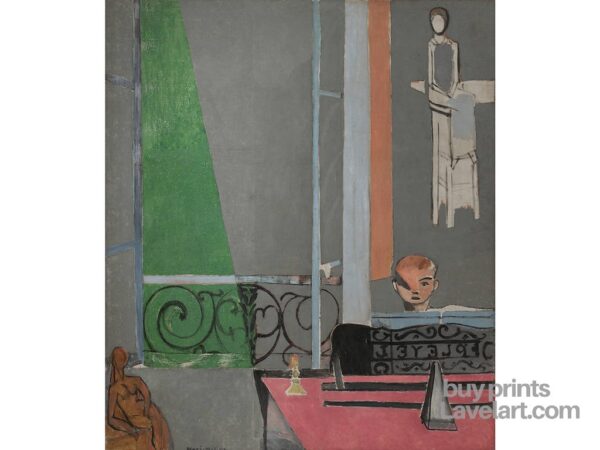
Henri Matisse, Piano Lesson, Courtesy Success Succession H. Matisse ARS N mother H. Matisse ARS N mother Henri Matisse ARS N
This 1916 painting was created during the years of the First World War, when Matisse’s works became more daring and difficult. The palette shifts away from the typical arabesques and toward a harder, edgier geometry, with an ominous palette of fleshy grays, blacks, browns, and pinks.
Henri Matisse attacks the canvas, sometimes with a chisel, scraping, etching, constantly reviewing, and leaving ample evidence of the revisions as he moves away from more watery paint applications. The piano lesson, a very personal composition depicting his son Pierre, is a composition about space, but also about time, as an allegory of the transition from childhood to adulthood.
7. L’ITALIANA
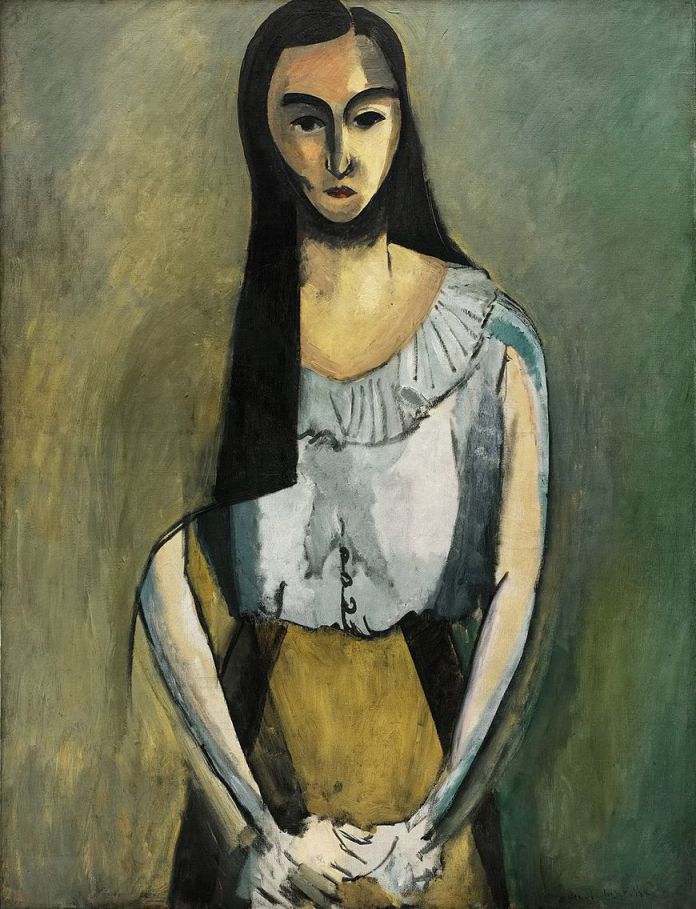
Henri Matisse, an Italian, Guggenheim Museum
The Italian, which was also created in 1916, clearly shows the transition from realism to abstraction. This is the first of many portraits Matisse painted of an Italian professional model named Laurette, and it demonstrates the rethinking and convergence of lines in order to “reach that state of condensation of sensations that constitutes a painting.”
This portrait, in comparison to the variants, is less corporeal and more ethereal, uses religious painting conventions to create an icon, stretching the features to resemble an African mask – which has led several critics to believe that Matisse, like several other modern artists, equated the idea of woman with exotic and “primitive Moderna” – in a deep spatial ambiguity and with very austere colors.
8. ODALISQUE

Henri Matisse’s Odalisca (harmony in red). Met Museum (CC)
During the 1920s, Matisse emphasized a more naturalistic style, as evidenced by a series of half-naked odalische depicted in imaginatively decorated rooms that suggested colonial environments and fascinations.
The exasperated sensuality of these works, combined with the choice of terminology (the term “odalisca” referred to a slave or concubine of the harem in Renaissance France, which had numerous political and commercial relations with the then-powerful Ottoman Empire), has led many critics to see a subtext of objectification and exploitation of the female body.
9. NUDE BLUE II
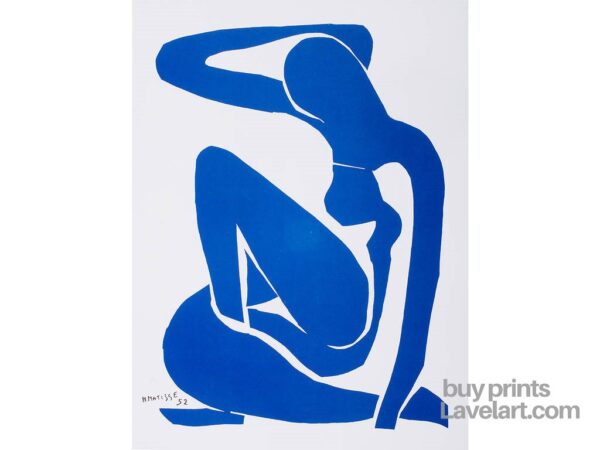
Henri Matisse’s Nude Blue II
Blue Nude, from 1952, is one of the artist’s most iconic images, an essential distillation of Matisse’s aesthetics. It is one of the “cutouts,” or works created by the artist with the assistance of some assistants. Under Matisse’s direction, cut-out pieces of paper were painted in different solid colors and arranged on a large backdrop of paper or muslin.
The artist was familiar with the technique, having used it in 1919. Until the 1940s, however, he primarily used the cutouts to create studies for sets and costumes, such as those for Sergei Diaghilev’s Ballets Russes and the interior decoration of the Chapelle du Rosaire de Vence, a Dominican nuns’ chapel near the French Riviera.
10. BIG NAKED LYING (NUDE PINK)
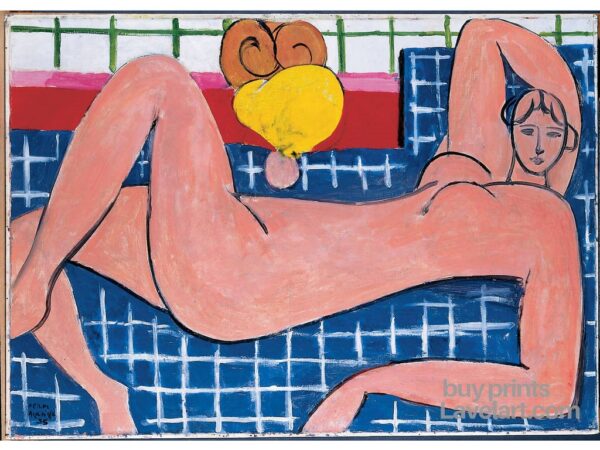
Henri Matisse, Courtes 2, great naked lying
Matisse returned to painting flatter shapes and colors that were even more simplified than before in the Thirties, with the pink nude of 1935 being a notable example. Although the painting is small, the subject takes up almost the entire composition, and the curves almost extend beyond the frame. The image has a languid and monumental grandeur that foreshadows the artist’s later works—the model, LD.
11. MEMORY OF OCEANIA
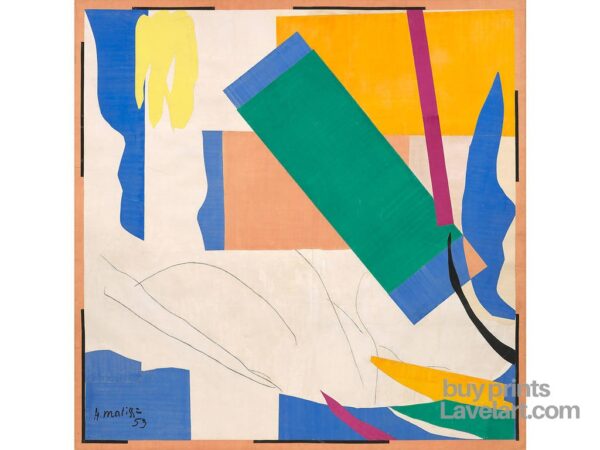
Oceania’s memory, Henri Matisse’s success, and Courtesy
Memory of Oceania (1952-53), one of Matisse’s final works before his death, is based on an old photograph taken in 1930 on a schooner in Tahiti. Despite the fact that the shapes are derived from the boat, the result appears to be highly abstract. Some art historians believe that this work (along with The snail, a cutout made around the same time) was a reaction to the large-scale abstraction coming out of the United States at the time, particularly abstract expressionism.
Related CTN News:
Hiring Level 2 Electricians: A Complete Guide
The Most Emotional Christian Paintings
“Ultraman Buddha” Paintings Create Major Controversy in Thailand

Art and Artists
Artist Anna Chekh Showcases “Diversity of Shadow Man” at Icon Siam

International contemporary artist Anna Chekh presents “Diversity of Shadow Man.” The artist showcases her trendy 3D art objects, a large Shadow Man sculpture, digital art, art prints, and innovative 3D pictures at the ArtVentureNFT gallery (1st floor, Icon Siam).
Step into the captivating world of “Shadow Man” by international contemporary artist Anna Chekh, where her iconic art character unveils the rich tapestry of her artistic vision. This enigmatic figure symbolizes curiosity and exploration of the world while steadfastly guarding his private life and values, embodying a faceless hero for the public. Shadow Man reflects the spirit of our generation, resonating with profound insights and captivating storytelling.

The exhibition features a collection of unique art objects from Chekh’s acclaimed ‘Shadow Man’ series, previously showcased at prestigious international venues including DIFC Art Nights in Dubai and the Victoria & Albert Museum in London. Soon, this compelling collection will be presented in Miami, New York, and Venice.

Alongside the ‘Shadow Man’ series, Anna Chekh presents a captivating selection of paintings, art prints, and digital artworks. Delve into the symbolic narrative crafted by Chekh, blending neo-symbolism with surrealistic elements to offer a profound visual journey into the human psyche and societal themes.
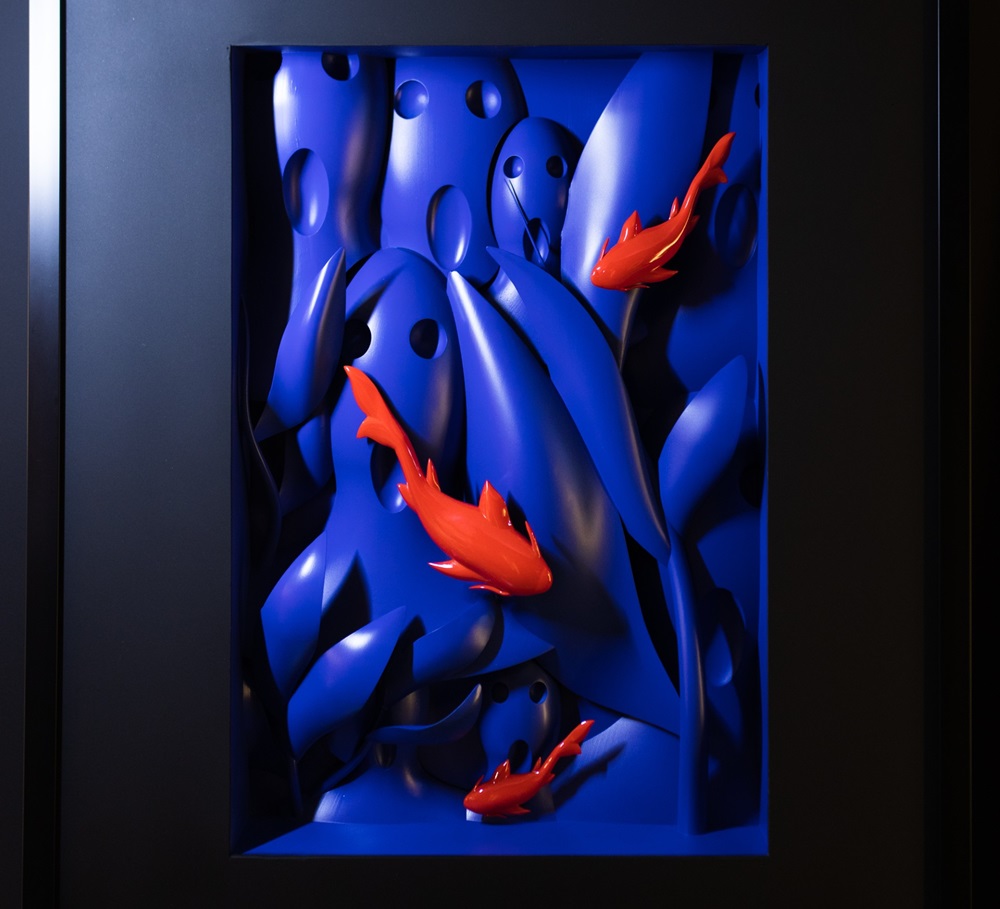
As a multidisciplinary artist, Anna Chekh extends her creative vision across various mediums, from traditional canvases and sculptures to cutting-edge NFTs, interactive installations, and innovative web 3.0 projects.
Her artworks, celebrated for their depth and innovation, have been showcased at esteemed venues worldwide from New York and Tokyo to Bangkok and Dubai, including the Carrousel du Louvre in Paris.
Anna has received numerous prestigious awards, including Best Innovative NFT 2024 and Best Phygital NFT 2023 (Dubai, Burj Khalifa).
People Also Reading:
ART Chiang Rai Exhibition June 1st Showcasing: The Best of Watercolors
ART Chiang Rai Exhibition June 1st Showcasing: The Best of Watercolors
Art and Artists
The Enduring Appeal of Custom Vinyl Stickers: Creativity on a Stick
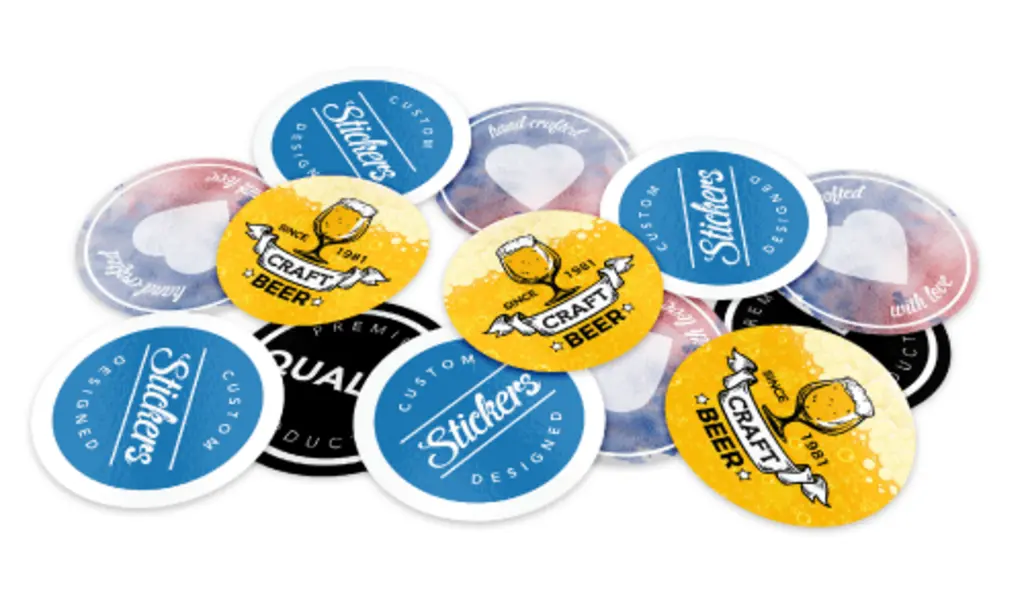
In a digital age where personal and business branding evolves at lightning speed, one tactile marketing tool has remained as relevant and effective as ever: custom vinyl stickers. Versatile, durable, and colorful, these stickers offer an impactful way to convey messages, demonstrate personality, and even enhance brand visibility. This detailed exploration of custom vinyl stickers will reveal why they continue to be a preferred choice for both individuals and businesses, detailing their uses, benefits, and creative possibilities.
The Allure of Vinyl Stickers
Vinyl stickers aren’t just popular; they are a phenomenon in their own right. Their robustness and aesthetic appeal make them ideal for a wide range of applications, from car decals to storefront decorations. Here’s why they stand out:
Durability: Vinyl is a strong, flexible material resistant to environmental factors like UV rays and moisture. This makes vinyl stickers perfect for both indoor and outdoor use, as they don’t fade quickly or peel off easily.
Quality: The quality of printing on vinyl is generally higher than on other materials. Colors appear brighter and more vibrant, which is crucial for capturing attention and conveying specific styles or brands.
Customization: The adaptability of vinyl allows for a myriad of customization options in size, shape, color, and finish. Whether you need a glossy finish to catch the light or a matte finish to reduce glare, vinyl stickers can be tailored to meet specific requirements.
Uses of Custom Vinyl Stickers
The uses of custom vinyl stickers are as varied as they are imaginative. Here are some of the most popular applications:
Personal Use:
- Vehicle Decals: Custom vinyl stickers are often used to decorate cars, motorcycles, and bicycles, allowing enthusiasts to showcase their unique style or membership in clubs and communities.
- Home Decor: Vinyl stickers can be applied to walls, furniture, and appliances, making them an easy way to revitalize a space without permanent changes.
- Personal Belongings: Laptops, phone cases, and water bottles are commonly adorned with vinyl stickers to personalize everyday items.
Business Use:
- Branding: Businesses use custom vinyl stickers as a cost-effective branding tool. Placing logo stickers on products, packaging, and even at physical locations enhances brand visibility.
- Promotions: Companies often give away vinyl stickers as part of promotional campaigns. Because they are seen as a value-added item, stickers can improve customer satisfaction and retention.
- Wayfinding: Vinyl stickers are excellent for directional purposes within businesses, helping guide customers and creating a more organized space.
The Design Process: From Concept to Completion
Creating custom vinyl stickers is an art form that involves several steps to ensure the final product perfectly captures the intended aesthetic and functional needs.
Designing the Artwork: The first step involves designing the artwork. This can be done using graphic design software like Adobe Illustrator or Photoshop. The design must consider the intended size of the sticker to ensure that details are not lost in translation from screen to print.
Choosing the Right Vinyl: There are different types of vinyl, each suitable for different conditions. For instance, cast vinyl is better for outdoor use due to its ability to withstand harsher conditions, whereas calendared vinyl might be sufficient for indoor use.
Printing and Cutting: Once the design is finalized, it’s printed using high-quality digital printers. After printing, the stickers are cut into the desired shape. Precision cutting is essential, especially for complex designs or shapes.
Quality Control: Before the stickers are packaged and sent out, they undergo quality control checks to ensure that every sticker meets the set standards of durability, color accuracy, and adhesion.
Creative Ideas for Vinyl Sticker Designs
Seasonal Themes: Capitalize on holiday seasons by creating themed stickers that can be used as part of promotional packages or as seasonal decorations.
Inspirational Quotes: Stickers with motivational quotes are perennial favorites. They can serve as personal reminders or inspirational gifts for others.
Artistic Collaborations: Collaborating with artists to create limited-edition sticker designs can add an exclusivity factor that appeals to collectors and enthusiasts.
Eco-Friendly Messages: With increasing awareness of environmental issues, stickers promoting eco-friendly practices or green branding can resonate well with a conscientious audience.
Conclusion
The charm of custom vinyl stickers lies in their simplicity and the profound impact they can have. Whether used to inject a bit of fun into personal items, add a professional touch to business products, or anything in between, vinyl stickers are an excellent choice for those looking to make a statement in a durable, customizable, and cost-effective way. As they continue to stick around in various forms, it’s clear that when it comes to making a mark, few options are as enduring—and adhesive—as vinyl stickers.
Art and Artists
Exploring Cloud Imagery and Cultural Expression: An Interview with Huaqi Liu

Today, we have the pleasure of interviewing Huaqi Liu, a talented artist whose journey into the world of painting began at the age of 16. Over the years, Liu has explored various artistic styles, beginning with traditional Chinese painting. As he delved deeper into his craft, his journey led him to evolve his artistic expression, and Liu’s passion for painting endured and flourished. This evolution has been marked by a natural progression, driven by his inner creative spark and ongoing exploration of different artistic mediums and techniques.

Q: Could you discuss some of the awards and recognition you’ve received in recent years, such as the Mayoral Certificate of Recognition from the City of Baltimore in 2022?
Huaqi Liu: The Mayoral Certificate of Recognition was my project where I taught children to draw and handled technical aspects like video tech. We connected children from Baltimore and Korea through artwork exchanges, culminating in an exhibition of the children’s art.
Q: In 2023, you gave a lecture titled “Clouds and Chinese Destiny” at the GFA department of the Maryland Institute College of Art. What was the focus of this lecture?
Huaqi Liu: I was invited by a friend who teaches at MICA. I shared my experiences from struggling to integrate into the American environment during my undergraduate studies to eventually applying for exhibitions. During the interactive session, students were interested in my projects, which led to discussions about my artwork. I shared the story about why I chose clouds as my subject, and what’s the meaning in Chinese traditional aesthetic.
Q: What style or genre of painting are you currently studying or practicing, and how would you define your own style?
Huaqi Liu: I don’t confine myself to a particular genre. Six years ago, I might have called myself an abstract artist, but now I feel it’s unnecessary to frame myself in that way.
Q: Who are some of your favorite and least favorite artists, and why?
Huaqi Liu: My top favorite artist is René Magritte because of his journey from wealth to poverty and his determination to pursue art with just a pen. I admire his innovation, especially his use of light strokes. Monet’s use of color and brushstrokes also influences my work, capturing the atmosphere and romanticism that I seek. I’m not fond of art that depicts violence or explicit sexuality as I find these themes aesthetically tiresome. I prefer art that allows for interpretation and symbolism, fostering a connection between the artist and the viewer.
Q: You have numerous publications, such as the academic paper “Cloud-infused artistry: unraveling the enigmatic bond between destiny and oil painting” in 2024. Could you share the significance of these awards and publications, along with the stories behind them?
Huaqi Liu: “Cloud-infused artistry” is an academic paper I wrote at the end of 2023, published in the CPCI journal. It provides a detailed explanation of my artwork, including my techniques using clouds and colors, and explores contemporary artists’ interest in clouds. For instance, there’s a contemporary artist who visualizes weather patterns with computer-generated lines, reflecting my own interest in clouds and their connection to human fate.
Q: How do you understand the role of this art form in society, and what value does it bring to you in terms of joy or fulfillment?
Huaqi Liu: Painting is a form of emotional output for me. It’s a sanctuary in the chaos of life, allowing me to express myself authentically. Though it can be stressful, I find solace in the process. Through my art, I aim to showcase my cultural contributions as an immigrant in America and my appreciation for multiculturalism. I hope when people see my work, they can resonate with me, that’s my goal.
-

 News3 years ago
News3 years agoLet’s Know About Ultra High Net Worth Individual
-
Entertainment2 years ago
Mabelle Prior: The Voice of Hope, Resilience, and Diversity Inspiring Generations
-

 Health4 years ago
Health4 years agoHow Much Ivermectin Should You Take?
-

 Tech2 years ago
Tech2 years agoTop Forex Brokers of 2023: Reviews and Analysis for Successful Trading
-

 Lifestyles3 years ago
Lifestyles3 years agoAries Soulmate Signs
-

 Movies2 years ago
Movies2 years agoWhat Should I Do If Disney Plus Keeps Logging Me Out of TV?
-

 Health3 years ago
Health3 years agoCan I Buy Ivermectin Without A Prescription in the USA?
-

 Learning3 years ago
Learning3 years agoVirtual Numbers: What Are They For?